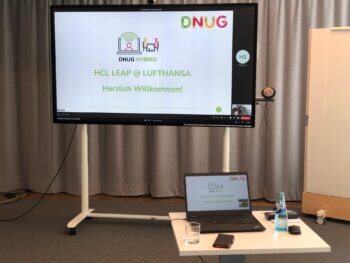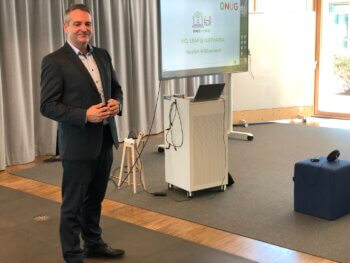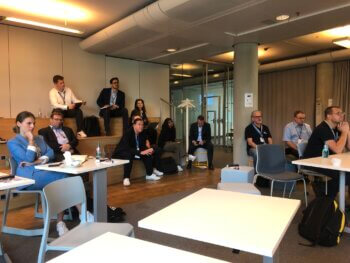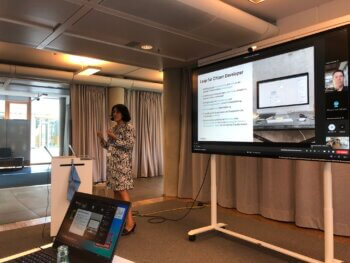Auch wenn das vom Volumen her jetzt nicht unsere größte Baustelle war, so sind doch der Mitgliedsantrag und die Cloud-Nutzungsvereinbarung zwei typische Beispiele von Prozessen, die man heute eigentlich nicht mehr auf Papier abwickeln will.
Aufgrund der gegebenen Infrastruktur bietet sich für die Abbildung der beiden Formulare/Prozesse Domino Leap an. Domino Leap ist eine NoCode/LowCode Plattform, die speziell, aber nicht nur für Domino-Kunden gedacht ist.
Mit einem klaren Ziel vor Augen, beide Formulare im Browser nutzbar zu machen und mit einer rechtsverbindlichen, digitalen Signatur zu versehen, haben wir uns an die Realisierung der entsprechenden Apps gemacht. Die Abbildung der beiden Formulare war – wie erwartet – schnell gemacht, die eigentliche Herausforderung sollte aber erst noch kommen.
Für die Abbildung der rechtsverbindlichen, digitalen Signatur sollte ein externer Dienstleister zum Einsatz kommen. Zur Signatur des ausgefüllten Formulars muss die daraus generierte PDF-Datei an diesen Dienstleister geschickt werden, was sinnvollerweise via REST abzubilden ist. Um sich gegenüber dem Dienstleister zu authentifizieren, muss ein entsprechender Token mitgegeben werden. Damit dieser Token nicht missbraucht werden kann, muss die zu signierende, in Leap generierte PDF-Datei vom Server und nicht vom Client an den Dienstleister gesendet werden. Dies auch deshalb, weil die API des Dienstleisters nicht dafür vorgesehen ist, direkt aus Browserapplikationen angesprochen zu werden (Stichwort: CORS). Dann erwartet der Dienstleister außerdem, dass die PDF-Datei als binärer Datei-Upload (multipart/form-data) und nicht als Text (Base64) hochgeladen wird. Im Hinblick auf die Größe der transportierten Dateien ist dies durchaus sinnvoll, entspricht aber nicht dem Format, was mit Leap Services möglich ist, da nur JSON Payloads vorgesehen sind. Es musste also ein Weg gefunden werden, die im Client generierte Datei an den Server zu übergeben und im Zuge dieser Maßnahme auch noch das Format zu wechseln.
Ohne allzu sehr ins Detail zu gehen: es hat sich gezeigt, dass der NoCode/LowCode Ansatz von Leap hier an seine Grenzen stößt. Was uns eindeutig gefehlt hat, ist die „Foundry“ Komponente aus dem Volt MX Angebot von HCL, was alleine schon aus Kostengründen aber keine Option darstellt. Nun wollten wir aber unser Projekt nicht erfolglos abbrechen, sondern haben sozusagen eine kleine „Foundry“ entwickelt. Konkret wurden dazu verschiedene Services in eine Notes-App ausgelagert. Diese Services sprechen wir aus Leap heraus an und bilden damit die Dinge ab, die in Leap entweder gar nicht oder zumindest nicht sinnvoll abzubilden sind.
Der Beitrag Domino Leap – NoCode/Lowcode & Beyond erschien zuerst auf DNUG e.V..





